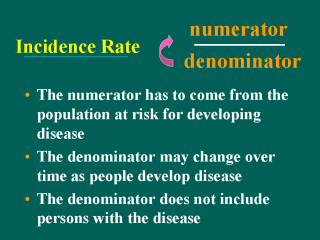 |
Epidemiology is a
science based upon rates. Incidence and prevalence rates provide information
on the importance of a disease or injury in a defined population.
Understanding how many injuries occur (the absolute number) provides only
one part of the puzzle; the numerator. The second piece is the population in
which they occur; the denominator. As we will see, the denominator is a very
important factor in defining the significance of a problem.
Effective injury control is based upon an understanding of injury rates;
i.e. how many injuries occur within a given population.
|
